“Friendship is
unnecessary, like philosophy, like art…. It has no survival value; rather it
is one of those things which give value to survival.”
― C.S.
Lewis, The Four Loves
During these unprecedented times, it’s important for all of us to focus on positive steps that we can take to stay healthy, not only physically, but also emotionally and spiritually. As difficult as things may appear to be, remember that within every crisis lie opportunities for growth and change.
This ‘pause’ from normal life offers the chance to mindfully consider how we spend our precious life hours. I encourage you to devote time every day to something that supports you in becoming the best you possible. Although social distancing is essential right now, you can still write or call a loved one, pursue a hobby that you enjoy, meditate, relax with restorative yoga, read a good book, or do anything else that uplifts you. One of my personal favorite activities is cooking. It’s a wonderful way to relax, to be creative, and to nourish others while nourishing ourselves.

Of course, my goal is to create not only delicious foods, but healthful foods. I’d like to share with you a few recipes that are particularly appropriate for flu and virus season. These recipes incorporate foods that have long been used in traditional medicine to enhance immune activity and lung function.
1. Shiitake Mushroom (Lentinus edodes)
Considered to be longevity tonics, mushrooms have been used as food and medicine by the Chinese for more than 6,000 years. Shiitake mushrooms grow in forests on decaying wood and are the second most-produced edible mushroom worldwide. Lentinan, a (1-3)-beta glucan found in shiitake, has a potent enhancing effect on both innate and adaptive immunity.1 In one study,lentinan protected against malaria blood-stage infection by evoking adaptive immune-responses.2
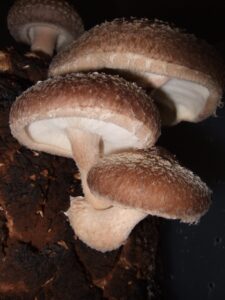
According to a 2015 randomized dietary intervention study in healthy young adults, consuming shiitake mushrooms daily improves immune function.3 In other research, rice bran fermented in shiitake mushroom increased interferon-γ activity without causing adverse effects.4
Along with their immune modulating properties, shiitake and other medicinal mushrooms are associated with reduced cancer and cardiovascular disease incidence.5-7 Research shows that shiitake mushrooms prevent fat deposition and lower triglycerides.8 Shiitake reduces cholesterol by improving lipid processing in the liver9 and is protective against liver disease and the development of liver fibrosis.10,11
Shiitake Mushrooms with Spring Onions and Garlic
This quick and savory dish combines sautéed mushrooms with spring onions and slivered garlic. If you enjoy spicy flavors, add a bit of horseradish mustard and a dash of cayenne pepper.
Ingredients
- 2 cups shiitake mushrooms (or any combination of mushrooms)
- 1 small spring onion or shallot, finely chopped
- 3 cloves garlic, minced
- 1 Tbls. extra virgin olive oil
- 1 Tbls. vegetable broth or water
- 1 Tbls. white wine (optional)
- 1 tsp. butter
- 1 tsp. horseradish mustard
- Salt and a generous amount of fresh black pepper
- 1 Tbls. chopped fresh parsley, or 1 tsp. dried
- Dash of cayenne pepper (optional)
Instructions
- In a large covered skillet over medium heat, sauté mushrooms, onion, olive oil, and vegetable broth for 3 minutes.
- Remove lid, add white wine, garlic, salt and pepper; and cook 3 minutes uncovered. Do not stir.
- Add butter, horseradish mustard, parsley, and dash of cayenne pepper. Cook for 1 minute and serve.
- For added flavor
and health benefits, top with finely grated fresh Parmigiano-Reggiano cheese.
Mushrooms are not only beneficial for immune health, but they are also excellent for weight management because they are low calorie but satisfying. Horseradish, mustard and cayenne also enhance immunity, and have the added benefit of being thermogenic, which increases the body’s ability to burn fat more easily.
2. Parmigiano-Reggiano Cheese
This delicious cheese has a sharp, nutty, slightly salty flavor. Not only is it a tasty addition to main dishes, salads, and soups, Parmigiano-Reggiano offers a wealth of health benefits for immunity, digestion, bone health, and the nervous system.
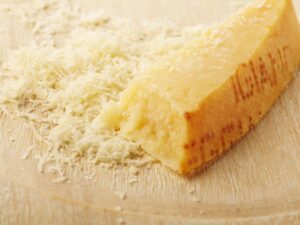
A ripened cheese with that is easily digested, Parmigiano-Reggiano contains a rich concentration of proteins and lipids. It’s lactose free, high in calcium, and appears to have prebiotic and probiotic effects.12 During the process of ripening, the beneficial bacteria in Parmigiano-Reggiano promote an extensive hydrolysis of cow’s milk proteins resulting in peptides that exhibit positive immunoregulatory activities.
Parmigiano-Reggiano contains optimal amounts of all essential amino acids (isoleucine, leucine, lysine, threonine, tryptophan, valine, methionine, phenylalanine, tyrosine and histidine) in a readily bioavailable form.12
During the Parmigiano-Reggiano ripening process, a discrete amount of short-chain fatty acids (SCFAs) are synthesized with a considerable production of butyrate. Of note is that Parmigiano-Reggiano contains 100% more butyrate than other fermented cheeses.13
The probiotic lactobacillus rhamnosus (LR) contained in Parmigiano-Reggiano plays a crucial role in producing high levels of enzymes responsible for proteolytic activity, fatty acid metabolism and the release of butyrate. LR has been well studied and has been shown in a number of different settings to support immune function.
Various beneficial health effects are well documented including the prevention and treatment of gastro-intestinal infections and diarrhea, and the stimulation of immune responses that promote vaccination or even prevent certain allergic symptoms.14 There is good evidence for the use of LR in the prevention and treatment of diarrhea from acute infections or drug related illnesses.15 One study found that LR is just as helpful as an antibiotic for treating urinary tract infections.16
Research shows that Parmigiano-Reggiano cheese can have up to 10 million colony forming units of viable lactic acid bacteria per gram of product, which is a significant amount of beneficial bacteria.1
By analyzing Parmigiano-Reggiano’s composition and considering its high content in hydrolysates peptides, the presence of butyrate, and other bacterial components, it is easy to hypothesize that this cheese has a significant potential for benefiting immune health.
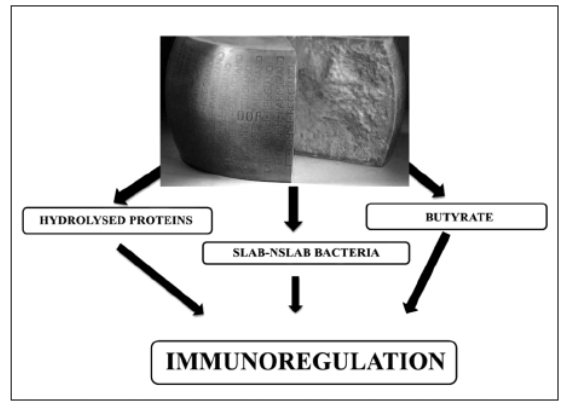
Based on its nutritional characteristics and of its easy digestibility, Parmigiano- Reggiano cheese is recommended by nutritionists for all age groups.18 I agree wholeheartedly—it’s a staple in our household and one of my favorite cheeses.
3. Horseradish Root (Armoracia Rusticana)
Horseradish was one of the five bitter herbs (along with coriander, horehound, lettuce, and nettle) historically used during the feast of the Passover. It’s commonly eaten now during Passover, and during Lent in the Eastern Christian faith.
A member of the cruciferae family, horseradish root is a rich source of beneficial plant compounds, especially phenolic compounds. Horseradish root contains a variety of glucosinolates including inigrin, glucobrassicin, neoglucobrassicin and gluconasturin, which form biologically active isothiocyanates when broken down in the digestive tract. The roots also contain ascorbic acid (vitamin C), up to 350 mg per 100 g of fresh horseradish root.19
Horseradish is an effective remedy for respiratory and sinus congestion. It has also been shown to help in managing hypertension and stimulating metabolism to reduce excess body weight.20
Beetroot-Horseradish Relish
While I was living in a Franciscan Eastern-rite Byzantine Monastery during the early 1980s, throughout Lent and Pascha (Easter) season we ate a dish popular in Poland and Western Ukraine. This recipe combines grated horseradish with beets to create a colorful dish with a bit of sweetness and a touch of heat.
The ratio of horseradish to beets is generally 1 to 3, which offers a mild flavor compared to other horseradish condiments.
Ingredients
- 4-5 small to medium beets
- 1-2 tsp. white vinegar or
- 1 tsp. vinegar and 1 tsp. lemon juice
- 1 teaspoon raw sugar (optional)
- 2 cups grated fresh horseradish root or purchased horseradish
- 1/4 teaspoon salt
Directions
- Boil the beets for about 40 minutes until soft, then cool, and grate.
- In a large bowl, mix vinegar, sugar, horseradish, and salt until well combined.
- Add grated beets and mix thoroughly.
- Pack into clean sterilized jars and store in the refrigerator for up to 2 weeks.
- Serve warm or cold, although cold is more traditional. This is excellent with hard-boiled eggs, but experiment using it as a condiment for anything you like.
4. Beetroot (Beta Vulgaris)
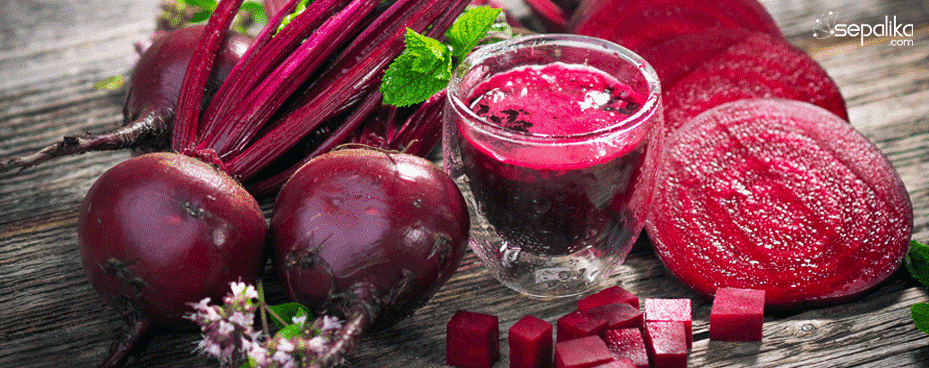
Beetroot has a wide range of healthful properties, including enhancing liver function, lung function (even in Chronic Obstructive Pulmonary Disease (COPD), cardiovascular health, and brain health. Beetroot specifically boosts nitric oxide, which is essential to peripheral blood flow and cellular oxygenation.21
Beetroot is being evaluated as a promising therapeutic treatment in clinical pathologies associated with oxidative stress and inflammation. Compounds in beetroot, most notably betalain pigments, display potent antioxidant, anti-inflammatory and chemo-preventive activity in vitro and in vivo.21
Beetroot is as an exceptionally rich source of antioxidant compounds. The bioactive constituents include betaine, polyphenols, carotenoids, flavonoids, saponins, and betalains, water-soluble pigments that are believed to be the unique active compounds associated with the well-known cancer preventive effects of red beets. Betalain pigments have been shown in several in vitro studies to protect cellular components from oxidative injury.
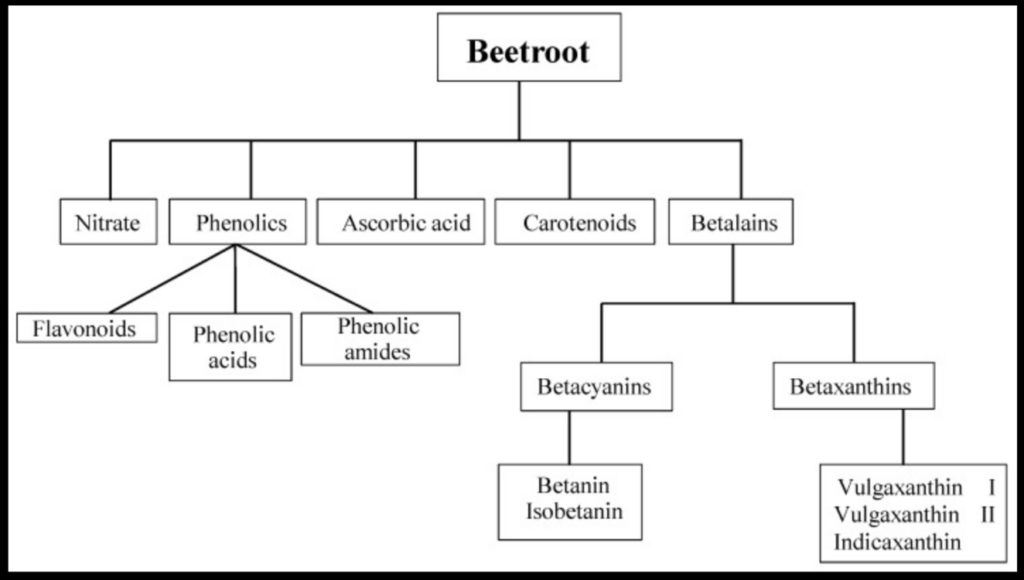
21
Beetroot juice has been found to increase the body’s production of glutathione, which contributes to its antioxidant and liver protective properties.22
Beneficial Effects on Blood Pressure
In studies, beetroot juice (BRJ) supplementation increased plasma nitrite concentrations and reduced diastolic blood pressure (BP) in older adults; while systolic BP was reduced in both older and younger adults, suggesting nitrate-rich BRJ may improve cardiovascular health, particularly in older adults due to the greater benefits from reductions in diastolic BP.23
A review of 16 studies found that BRJ supplementation is a cost-effective strategy that might reduce blood pressure in different populations, probably through the nitrate/nitrite/nitric oxide (NO3/NO2 /NO) pathway and secondary metabolites found in beets.24
Restores Lung Health in COPD
Research shows that consumption of as little as 500ml of BRJ per day can improve the lifestyle and lung health of COPD adults and allow them to feel more energized and active. This can reduce exhaustion rate by nearly 15%.25
In a review and analysis of 23 scientific articles, supplementation with BRJ showed improved cardiorespiratory endurance in athletes by increasing efficiency, which improves performance at various distances, increases time to exhaustion at submaximal intensities, and may improve cardiorespiratory performance at anaerobic threshold intensities and maximum oxygen uptake (VO2max). 26
Anti-Viral Effects (SARS CoV)
Nitric oxide (NO) release plays a role in anti-viral defense as well. A study from 2005 found that that NO generated by inducible nitric oxide synthase, an enzyme that produces NO, inhibits the SARS CoV replication cycle.27
Cancer Preventive Properties
Studies indicate that betanins from beetroot impede inflammatory lesion development by limiting inflammatory cell invasion and the neutralization of ROS produced by inflammatory cells and tumor cells. This both moderates angiogenesis and increases apoptosis.28
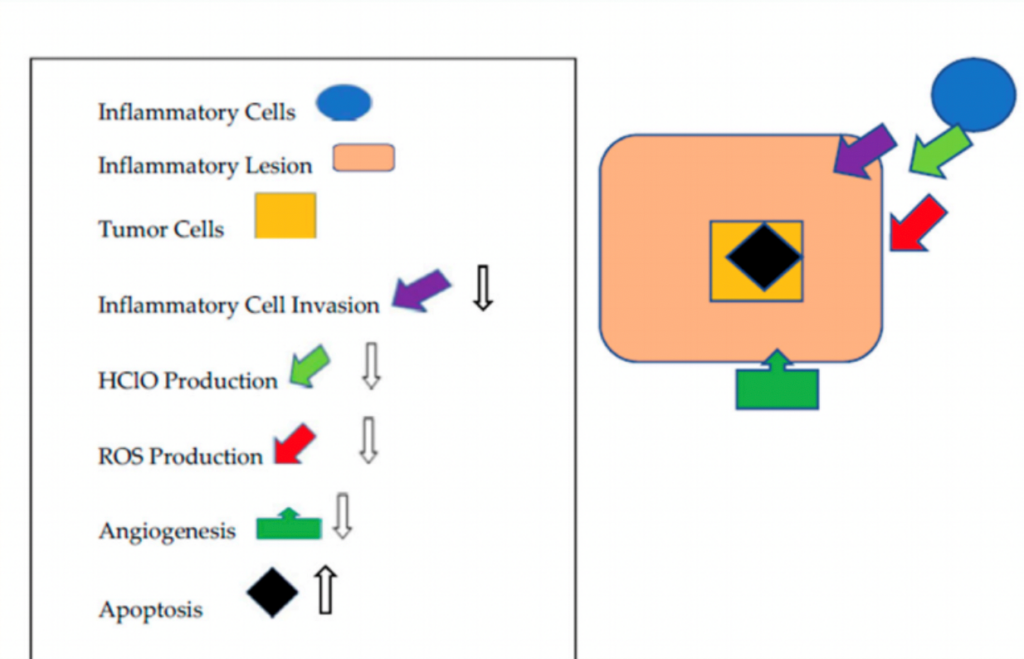
28
An in vivo anti-tumor promoting activity evaluation against mice skin and lung bioassays also revealed a significant tumor inhibitory effect. The findings suggest that beetroot ingestion can be a useful in cancer prevention.29
Beetroot is a nourishing food for the bone marrow. In a 2017 study, beetroot-treated mice displayed enhancement in hematocrit and hemoglobin levels as well as the number of red blood cells. In mice exposed to radiation, a beetroot diet improved survival rate. 30Beetroot has been shown to enhance antioxidant defense and protect against liver damage induced by organophosphorus insecticides in animals.31
5. Pear (Pyrus Communis)
In Traditional Chinese Medicine, pears are valued for their quality of clearing heat, providing moisture, and clearing phlegm from the lungs. They are considered an inward ‘yin’ nourishing food.
A source of many nutrients, pears are rich in fiber, vitamin C, and potassium. They are also a good source of phytochemicals, especially antioxidants, and provide between 27 and 41 mg of phenolics per 100 g. Animal studies with pears suggest that pears may regulate alcohol metabolism, protect against ulcers, and lower plasma lipids.32
Poached Spiced Pears
This delicious recipe incorporates the immune enhancing properties of ginger root and fresh oranges with the nourishing, lung supportive qualities of pears.
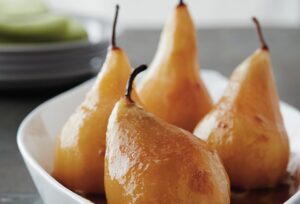
Ingredients
- 4 pears, peeled and cut in halves
- 1 zest of orange (or lemon), or a few orange slices
- 1 or 2 cinnamon sticks broken in half
- 1 or 2 pieces of clove (this is optional, but cloves are wonderful for the immune system)
- 2-3 teaspoons raw honey, such as Manuka (depending on the sweetness of the pears)
- 1 tsp. vanilla
- 1 tsp. fresh ginger juice (grate fresh ginger root and squeeze through cheesecloth)
- Pinch of salt
- 1 cup water, plus 1 cup pear or apple juice
Instructions
- In a large saucepan, combine orange or lemon zest, cinnamon stick, ginger, salt, pear or apple juice, and water.
- Add pears. Bring to a simmer. Cook, turning pears occasionally, until easily pierced with the tip of a paring knife, but not falling apart, about 20 minutes. Remove pears from liquid; transfer to large bowl.
- Raise heat to high; boil cider mixture until reduced to syrup, about 15 minutes. Discard cinnamon. Pour syrup over pears; refrigerate.
- Serve as is or with a dollop of yogurt, coconut cream, or toasted cinnamon walnuts.
A note on fresh oranges: I drink fresh orange juice every morning. Not only are oranges rich in vitamin C, but they also provide hesperetin and luteolin, both of which have been shown to inhibit COVID entry into the cell. Luteolin inhibits furin, induces viral cell apoptosis, and attenuates neutrophilic oxidative stress and inflammation.33 Studies show that luteolin treatment reduces mature viral particles production. The anti-viral activity of luteolin is due to inhibition of pro protein convertase furin.34
Thoughts on Social Distancing
We are currently being asked to stay at home, to isolate, and to practice social distancing. But in truth, long before the corona virus forced this upon us, we have been distancing ourselves from one another. Loneliness and social isolation have become the norm in our society, especially for our elders. This time of extreme distancing, and the immense pain that it is causing, is a wake-up call for all of us.

We can use this time—the “Great Pause”—to reflect on what really matters in life. As we dissolve the “I” and embrace the “we” in everything, we understand that the mystery we call God is both around us (our brothers and sisters), within us, and in Nature, including the healing foods we consume. Think about this – the word illness begins with the letter “I” while the word wellness begins with “We.” We are all one, and together, we heal.
I hope and pray you stay healthy during these difficult times,
Donnie
- Kupfahl C, Geginat G, Hof H. Lentinan has a stimulatory effect on innate and adaptive immunity against murine Listeria monocytogenes infection. Int Immunopharmacol. 2006;6(4):686–696. doi:10.1016/j.intimp.2005.10.008
- Zhou LD, Zhang QH, Zhang Y, Liu J, Cao YM. The shiitake mushroom-derived immuno-stimulant lentinan protects against murine malaria blood-stage infection by evoking adaptive immune-responses. Int Immunopharmacol. 2009;9(4):455–462. doi:10.1016/j.intimp.2009.01.010
- Dai X, Stanilka JM, Rowe CA, et al. Consuming Lentinula edodes (Shiitake) Mushrooms Daily Improves Human Immunity: A Randomized Dietary Intervention in Healthy Young Adults. J Am Coll Nutr. 2015;34(6):478–487. doi:10.1080/07315724.2014.950391
- Choi JY, Paik DJ, Kwon DY, Park Y. Dietary supplementation with rice bran fermented with Lentinus edodes increases interferon-γ activity without causing adverse effects: a randomized, double-blind, placebo-controlled, parallel-group study. Nutr J. 2014;13:35. Published 2014 Apr 22.
- Kojima H, Akaki J, Nakajima S et al. Structural analysis of glycogen-like polysaccharides having macrophageactivating activity in extracts of Lentinulaedodes mycelia. J Nat Med. 2010 Jan;64(1):16-23
- Kuvibidila S and French C. White button, shiitake, and portabella mushrooms inhibit the secretion of vascular endothelial growth factor (VEGF) and the proliferation of the androgen dependent LNCap prostate cancer cell line. FASEB J, Apr 2011; 25: 979.11.2011.
- Martin KR and Brophy SK. Commonly consumed and specialty dietary mushrooms reduce cellular proliferation in MCF-7 human breast cancer cells. Exp Biol Me (Maywood). 2010 Nov 1;235(11):1306-14
- D. Handayani, J. Chen, B. J. Meyer, and X. F. Huang, Dietary Shiitake Mushroom (Lentinus edodes) Prevents Fat Deposition and Lowers Triglyceride in Rats Fed a High-Fat Diet, Hindawi Publishing Corporation Journal of Obesity Volume 2011, Article ID 258051, 8 pages
- Sharma K, Singh VP, Singh NK. A review on Phytochemistry and Pharmacology of Medicinal as well as Poisonous Mushrooms. Review Article. Mini-Reviews in Medicinal Chemistry. 2018. 18:1
- Akamatsu S, Watanabe A, et al. Hepatoprotective effect of extracts from Lentinus edodes mycelia on dimethylnitrosamine-induced liver injury. Biol Pharm Bull. 2004. 27(12):1957-1960
- Bisen PS, Baghel RK, et al. Lentinus edodes: a macrofungus with pharmacological activities. Curr Med Chem. 2010. 17(22):2419-2430
- Pampaloni B., et al. Parmigiano Reggiano cheese and bone health, Clinical Cases in Mineral and Bone Metabolism 2011; 8(3): 33-36
- Summer A., et al.: Cheese as Functional Food, Food Technol. Biotechnol. 55 (3) 277–289 (2017) Fermentation process yields unique health benefits
- Gatti M, Bottari B, Lazzi C, Neviani E, Mucchetti G. Invited review: Microbial evolution in raw-milk, long-ripened cheeses produced using undefined natural whey starters. J Dairy Sci. 2014;97:573-91. doi: 10.3168/jds.2013-7187
- Segers ME, Lebeer S. Towards a better understanding of Lactobacillus rhamnosus GG–host interactions. Microb Cell Fact. 2014;13 Suppl 1(Suppl 1):S7. doi:10.1186/1475-2859-13-S1-S7
- Beerepoot, M. A. et al. Lactobacilli vs antibiotics to prevent urinary tract infections: a randomized, double-blind, noninferiority trial in postmenopausal women. Archives of Internal Medicine. 172 (9), 2012 May 14
- Malin M, Suomalainen H, Saxelin M, et al. Promotion of IgA immune response in patients with Crohn’s disease by oral bacteriotherapy with GG. Ann Nutr Metab 1996;40(3):137-145; http://www.powerofprobiotics.com/Lactobacillus-rhamnosus.html
- Grimaldi, G., et. al. The potential immunonutritional role of parmigiano reggiano cheese in children with food allergy, Progress in Nutrition 18(1):3-7 · March 2016
- Gafrikova, Michala et al. “Extract from Armoracia rusticana and its flavonoid components protect human lymphocytes against oxidative damage induced by hydrogen peroxide.” Molecules (Basel, Switzerland) vol. 19,3 3160-72. 14 Mar. 2014, doi:10.3390/molecules19033160
- International Scholarly and Scientific Research & Innovation 6(4) 2012;https://fdc.nal.usda.gov/fdcapp.html#/?query=ndbNumber:2055, retrieved March 28, 2020.
- Clifford T, Howatson G, West DJ, Stevenson EJ. The potential benefits of red beetroot supplementation in health and disease. Nutrients. 2015;7(4):2801–2822. Published 2015 Apr 14. doi:10.3390/nu7042801
- Krajka-Kuźniak V, Paluszczak J, Szaefer H, Baer-Dubowska W. Betanin, a beetroot component, induces nuclear factor erythroid-2-related factor 2-mediated expression of detoxifying/antioxidant enzymes in human liver cell lines. Br J Nutr. 2013;110(12):2138–2149. doi:10.1017/S0007114513001645
- Stanaway, L.; Rutherfurd-Markwick, K.; Page, R.; Wong, M.; Jirangrat, W.; Teh, K.H.; Ali, A. Acute Supplementation with Nitrate-Rich Beetroot Juice Causes a Greater Increase in Plasma Nitrite and Reduction in Blood Pressure of Older Compared to Younger Adults. Nutrients 2019, 11, 1683.
- Mario Siervo, Jose Lara, Ikponmwonsa Ogbonmwan, John C. Mathers, Inorganic Nitrate and Beetroot Juice Supplementation Reduces Blood Pressure in Adults: A Systematic Review and Meta-Analysis, The Journal of Nutrition, Volume 143, Issue 6, June 2013, Pages 818–826,
- Friis AL, Steenholt CB, Løkke A, Hansen M. Dietary beetroot juice – effects on physical performance in COPD patients: a randomized controlled crossover trial. Int J Chron Obstruct Pulmon Dis. 2017;12:1765–1773. Published 2017 Jun 15. doi:10.2147/COPD.S135752
- Domínguez, Raúl et al. “Effects of Beetroot Juice Supplementation on Cardiorespiratory Endurance in Athletes. A Systematic Review.” Nutrients vol. 9,1 43. 6 Jan. 2017, doi:10.3390/nu9010043
- Akerström S, Mousavi-Jazi M, Klingström J, Leijon M, Lundkvist A, Mirazimi A. Nitric oxide inhibits the replication cycle of severe acute respiratory syndrome coronavirus. J Virol. 2005;79(3):1966–1969. doi:10.1128/JVI.79.3.1966-1969.2005
- Lechner, John F, and Gary D Stoner. “Red Beetroot and Betalains as Cancer Chemopreventative Agents.” Molecules (Basel, Switzerland) vol. 24,8 1602. 23 Apr. 2019, doi:10.3390/molecules24081602
- Kapadia GJ, Tokuda H, Konoshima T, Nishino H. Chemoprevention of lung and skin cancer by Beta vulgaris (beet) root extract, Cancer Lett. 1996 Feb 27;100(1-2):211-4.
- Cho, Jinhee et al. “Beetroot (Beta vulgaris) rescues mice from γ-ray irradiation by accelerating hematopoiesis and curtailing immunosuppression.” Pharmaceutical biology vol. 55,1 (2017): 306-319. doi:10.1080/13880209.2016.1237976
- Albasher, Gadah et al. “Ameliorative Effect of Beta vulgaris Root Extract on Chlorpyrifos-Induced Oxidative Stress, Inflammation and Liver Injury in Rats.” Biomolecules vol. 9,7 261. 7 Jul. 2019, doi:10.3390/biom9070261
- Reiland H, Slavin J. Systematic Review of Pears and Health. Nutr Today. 2015;50(6):301–305. doi:10.1097/NT.0000000000000112
- Jo, Seri et al. “Inhibition of SARS-CoV 3CL protease by flavonoids.” Journal of enzyme inhibition and medicinal chemistry vol. 35,1 (2020): 145-151. doi:10.1080/14756366.2019.1690480
- Peng, M., et.al., Luteolin restricts dengue virus replication through inhibition of the proprotein convertase furin, Antiviral Research Volume 143, July 2017, Pages 176-185

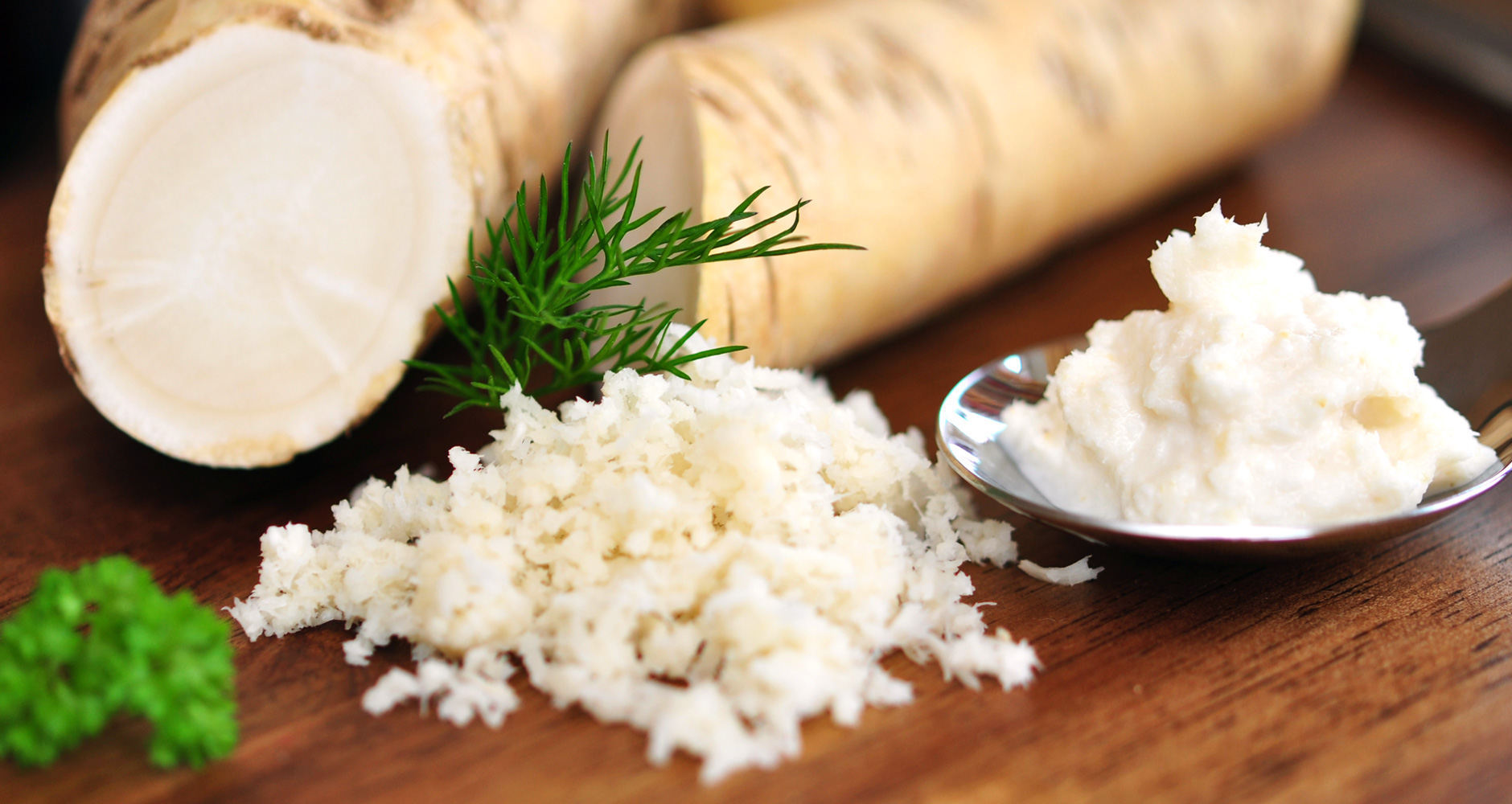
What a wonderful blog. Practical, info rich, with delicious recipes. I’m going to cook up some beets with a horseradish relish to go along with my shiitake stir-fry and brown rice. Thanks, DY!
Thank you, Donnie
Thank you, Donnie, for the rich and pungent article,
helpful in all ways.
Looking forward to trying your beetroot and horseradish recipe. I live in Scotland and we get a local veg box with loads of beets so new recipes are always welcome. We also get lots of Swedes, Kohlrabi, and Celeriac, which I suspect all have great health benefits that I’ve never researched.
A favorite beet recipe for us is either grating them and cooking in the oven like a giant pancake with loads of rosemary or putting the beats through the spiralizer, often mixed with other root vegetables and baking it then adding either some sort of sauce, or simply feta and walnuts and mediterranean herbs.
As always, wonderful information, Donnie. Thomas and I appreciate how you balance your experience as a chef, with your expertise in medical herbalism and nutrition. We are all your fortunate recipients. No one shares such inspired, life-extending information. Thank you Donnie and God Bless.
Great information! Thank you!
These are wonderful recipes that I will certainly begin to implement into our weekly meal planning. Thank you so much!
I just made the pears and OMG what an amazing, delicious, healing dish..YUMMMY
Thank you
I also loved your comments about the “WE”.
Wonderful recipes, thank you so much Donnie.
So grateful you are sharing your deep knowledge with the world. You are a gift to all of us.
I did not read this post until now – I was sick with corona virus. Thank you for all your work, your thought out posts, your research. My kids and husband still hate those nasty but vital cold and flu compounds, cough compound, which made them better in couple of days instead of weeks.G-b bless you!